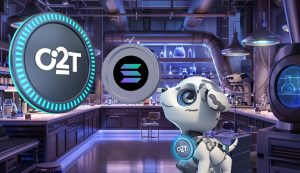Many Things Make zkSync 2.0 Welcomed By the Community
Over the past year, the zkSync platform has also raised a total of $458 million in mission funding to grow the ecosystem. At the same time, the community also sees this platform as a great opportunity to experience retroactive. So what makes zkSync 2.0 so popular?
What is zkSync?
The zkSync project is a layer-2 solution that belongs to the zk-Rollup group. The project is developed by the team of Matter Labs. zkSync is one of a number of solutions launched to solve scalability and transaction fees on the Ethereum network.
Scaling and cost reduction on the Ethereum (ETH) network has become the focus of most solutions today. There are currently 4 typical solutions for scaling the Ethereum network including Sidechain, Plasma, Rollup or State channel. While the Optimistic rollup hasn’t proved much since the mainnet and Sidechain as well as Plasma are still suffering from some security flaws, expectations are now placed on zk-Rollup solutions.
However, zkSync is a solution that is attracting a lot of attention from big names in the market such as Binance, Ethereum Foundation, Coinbase …
Highlights of zkSync
- Withdrawals from L1 to L2 and via mainnet are fast: It takes less than 1 minute to complete the transaction over the bridge and TX fees are about 30x cheaper than Ethereum. This is a huge advantage of zkSync because it can handle a large number of transactions with high endurance.
- $458 million raised: Matter Labs has raised a quarter of a billion dollars in various fundraising rounds led by prominent backers in the crypto space as well as traditional finance.
- ZK-Rollup Technology: Helps to reduce the bridging time between L1 and L2 to a few minutes instead of a week like Optimistic Rollup.
- Low Fees: zkSync offers a very competitive fee structure while a basic ETH deposit costs as little as $1. This makes TX over zkSync much cheaper than most Optimism backups.
What is zkSync 2.0?
zkSync 2.0 (or zkSync v2) is an upgraded version of zkSync. zkSync v2 is made to look like Ethereum with smart contracts written in Solidity/Vyper, but with lower fees. It gives developers design space to experiment with applications that are not possible on Ethereum today. It took 4 long years, but zkSync 2.0 is now on the mainnet, fast moving towards a fully controlled release.
zkSync 2.0 includes zkRollup and zkPorter. Unlike zkSync 1.0 – the scope of functionality is purely for payments and transactions, zkSync 2.0 is different, this solution offers the ability to support generalized smart contracts, ie zkSync Complier will convert smart contracts from language to language. Solidity to zkEVM for EVM compatibility and off-chain data availability – zkPorter.
zkEVM and zkPorter provide the ability that smart contracts on Ethereum can be easily converted to zkSync Layer 2 with minimal code editing. Because zkEVM and zkPorter are interoperable and composable, zkSync 2.0 can significantly outperform all other scaling solutions.
Accordingly, zkSync 2.0 will solve existing problems on Ethereum including:
- Security.
- Decentralized.
- Ability of extension.
- Programming ability.
Features of zkSync 2.0
- Security without dependence on third parties.
- The smart contract is EVM permissionless compatible.
- There is a standard Web3 API for easy linking between projects/protocols in the future Web3 network.
- Still maintaining key EVM features.
- Added new features like Account Abstraction (proposal to allow contracts to be top level accounts to pay fees and initiate transactions) and meta transactions.
Why is the community attracted?
zkSync 2.0 mainet is on the right track
The Ethereum Layer 2 project is about to undergo its most significant upgrade to date. With the launch of zkSync 2.0, the network will gain the capacity for smart contracts, letting developers create and deploy their own DeFi protocols, NFTs, and blockchain games.
Currently, zkSync 1.0 only lets users transfer tokens between wallets. However, this hasn’t stopped it from finding use within certain niches. For example, Gitcoin Grants, a program that helps developer teams raise funding for public goods projects, lets users donate through zkSync, offering projects and contributors huge savings in gas fees compared to what they would have to spend on Ethereum mainnet.
zkSync is one of several Layer 2 solutions working to scale Ethereum. It uses Zero-Knowledge proofs to bundle transactions together on a separate network and send them back to Ethereum mainnet for validation. Through this approach, “ZK-Rollups” like zkSync can reduce transaction gas fees by an order of magnitude while inheriting Ethereum’s security and decentralization.
Matter Labs, the company behind zkSync, has been working on its 2.0 version since 2020. The goal has been to fuse ZK-Rollup scaling technology with the Ethereum Virtual Machine, allowing code written in Ethereum’s Solidity language to be deployed on a ZK-Rollup-based Layer 2 network. Although this was initially expected to take years to achieve, several breakthroughs have sped up development. After a series of testnets earlier in the year, Matter Labs is now preparing for the full release of its so-called “zkEVM” 2.0 network.
zkSync token

It’s not just the launch of zkSync 2.0 that excites crypto enthusiasts. Last week, Matter Labs Director of Procurement, Steven Newcomb, revealed during a call on Twitter Spaces that the details surrounding the zkSync token will be announced in early November, 2022.
According to Matter Labs’ developer documentation, the company has always intended to issue tokens for its zkSync network, but details on when that will happen have yet to be announced. Many have suggested that the zkSync token could be used as an incentive for a decentralized transaction sequence, similar to how Ethereum pays staking rewards to its validators.
Others have also speculated that early adopters of the zkSync 1.0 and 2.0 testnet might receive an airdrop of zkSync tokens as a reward for their participation. Other Ethereum Layer 2s have airdropped tokens to early adopters in the past. In May, Optimism celebrated the launch of its OP governance token by distributing 5% of the token supply to early adopters and those meeting various eligibility requirements, also said at that time, they will have more airdrops accounting for 14% of the total supply.
Conclusion
The above article has introduced readers briefly about what zkSync and zkSync 2.0 are and shared why it is expected by the community. zkSync 2.0 brought additional smart contract functionality, allowing developers to deploy their own DeFi, NFT and game applications on Layer 2 networks. Overall based on the project’s development plan and actual numbers have shown that zkSync is likely to explode strongly in the coming time. Did that happen in your opinion?
Hope the article is useful to you. If you have any suggestions, please leave a comment below to make our article better.
DISCLAIMER: The Information on this website is provided as general market commentary and does not constitute investment advice. We encourage you to do your own research before investing.
Join us to keep track of news: https://linktr.ee/coincu
Foxy
Coincu News





















